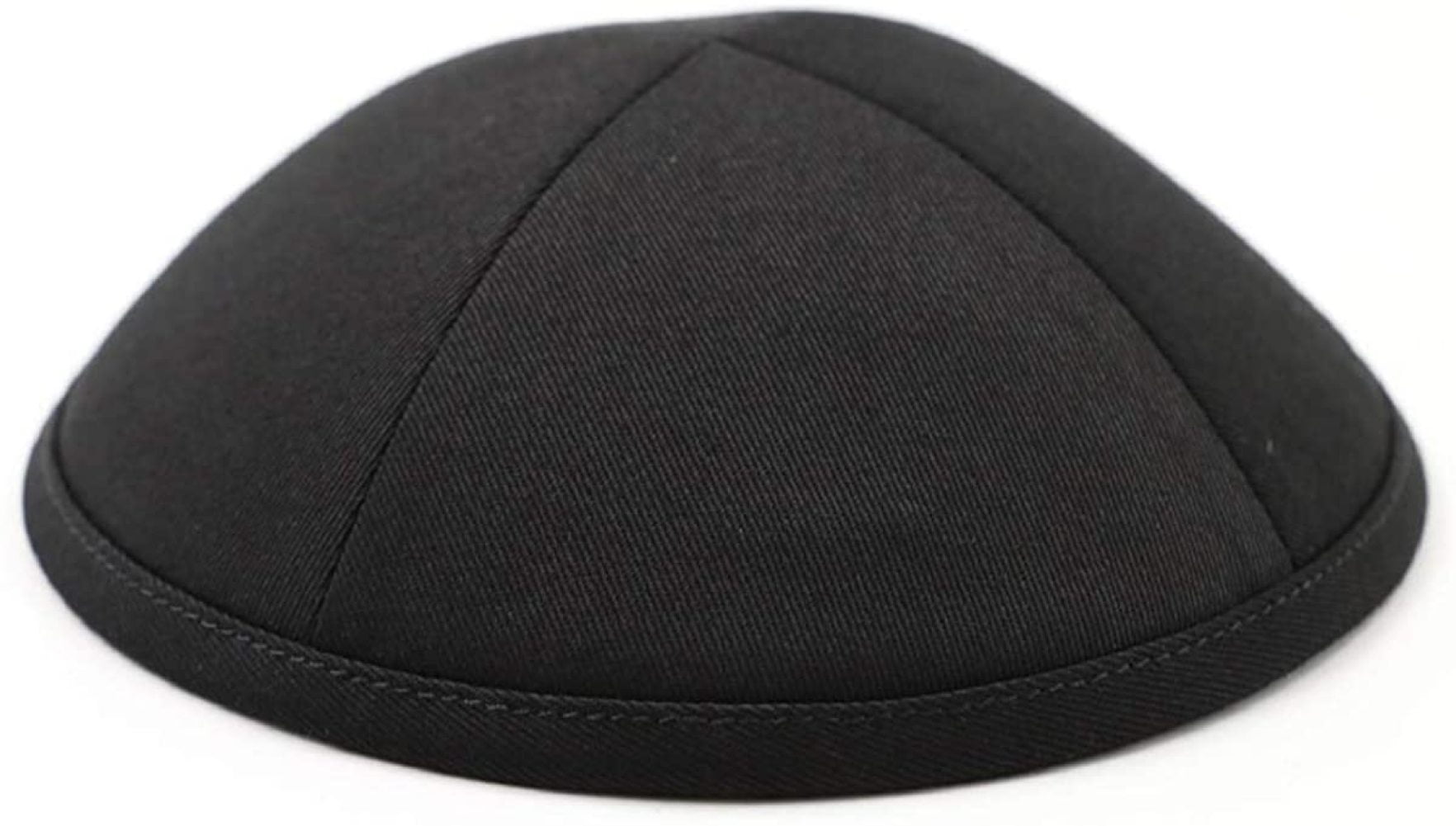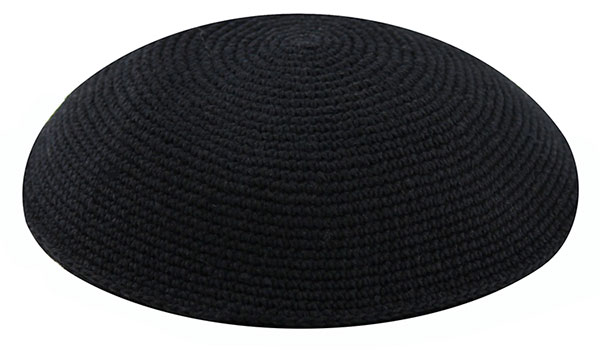
The kippah that tends to indicate the lowest level of observance within the Jewish community is almost certainly the black (or white) silk variety that is often given out at funeral homes. This usually means that the person is observant enough to want to cover his head while attending synagogue or saying blessings, but not all the time. A kippah with an obvious crease in it probably indicates that the kippah spends more time folded in the wearer’s pocket than on his head. A kippah that’s white, or colorful, can imply a more modern outlook. In general, dark colored kippot, whether they’re leather, crocheted or velvet, often are worn by members of more traditional communities. If you don’t want to be mistaken for a very observant and knowledgeable member of the Jewish community, you should definitely avoid the black velvet kippah. Men who don the black velvet kippah often wear a black fedora on top of the kippah, as well. Ultra-Orthodox Jews tends to wear black velvet kippot, about the size of a salad plate.

So if you can find a regular hat that you feel comfortable wearing in synagogue that is one way to avoid misrepresenting yourself to others.īut if you’d like to stay within the genre of traditional kippot, there is quite a variety to choose from. This allows them to cover their heads as tradition dictates, but to do so without marking themselves as Jews wherever they go. Many religious men wear hats instead of, or over, their kippot. The first is to cover your head with something other than a traditional kippah. It seems to me that you have a few options. Maarit ayin is aimed at preventing behavior that could be misleading to others, and that’s exactly what you’re trying to avoid by wearing a kippah. It may be technically permissible to use a bank bathroom on Shabbat, but a passerby might see the person in the bank and think the person is going to withdraw or deposit money, which is prohibited on Shabbat. For example, a traditionally observant Jewish person who needs to use the bathroom while walking around a city on Shabbat would be discouraged from walking into a bank or a restaurant to use their facilities. Basically, Jews are discouraged from doing anything that could appear inappropriate or wrong, even if it’s actually not problematic. What you’re talking about is closely related to the famous Jewish concept of maarit ayin, or the appearance of impropriety. Though the kippah itself doesn’t have any inherent meaning, it does serve as a marking of a Jewish person (usually a man) who is heavily invested in Jewish life. In our article about head coverings, we talk about how wearing a kippah can be a badge of membership and commitment to the Jewish people.

So, my question is are there any types of kippah that indicate a higher level of religiosity or awareness than others? I want to represent myself as honestly as possible especially since I am basically a newbie at being an observant Jew.Īnswer: This is a great question, Benjamin. In my case however, the appearance could be deceiving because I do not consider myself Orthodox (yet, at any rate) and don’t want to surprise people if I am not exactly what I appear to be. However, this does give the impression that a man would be observant and know all the rituals/etiquette/customs well.


There is obviously so much I have yet to learn, but have always been taught that it is proper etiquette for any Jewish male to wear a kippah at any part of a synagogue or its grounds that he visits. Question: Despite having Jewish ancestry, I never really observed the religion until during the last several months. My Jewish Learning is a not-for-profit and relies on your help Donate


 0 kommentar(er)
0 kommentar(er)
